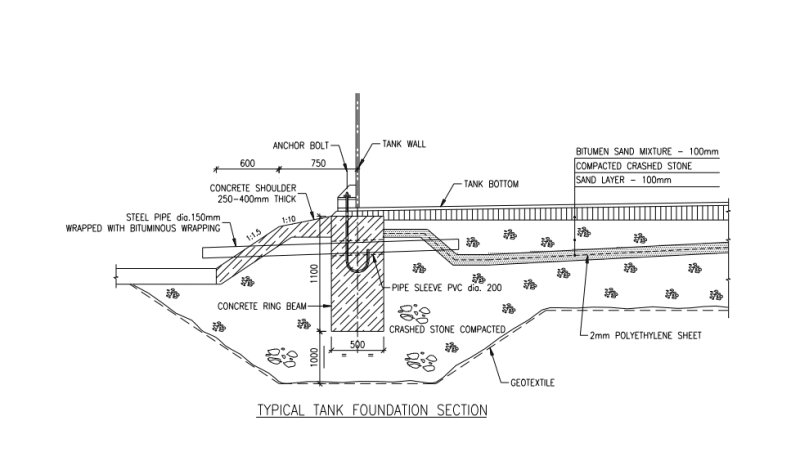A couple other things to consider:
[ul]
[li]If space is limited, using an inverted tee design can help a little.[/li]
[li]Is the savings in concrete worth the somewhat more complicated construction?[/li]
[/ul]
For an example of the first point, let's say you want to erect two large tanks and provide 15' clear between ringwalls for vehicle access (I've used this dimension for water storage tank designs). If tank loads and soil properties require 30" wide ringwalls, you can save 12" between the tanks by using 18" wide ringwall stems and 30" wide ringwall "flanges" underground. I have never dealt with this scenario in my own designs, but I have performed the QA/QC reviews on two project where inverted tee ringwalls were used to save both space and concrete.
For an example of the second point, the first tank I ever designed (early 1980s) required a 30" wide ringwall. My boss told me about inverted tee designs but he didn't think the savings in concrete justified the more complicated construction. However, given the current price of concrete he might have a different opinion today. I haven't had to think about this question recently, so I haven't dug into it enough to compare the two using current costs.
============
"Is it the only lesson of history that mankind is unteachable?"
--Winston S. Churchill

